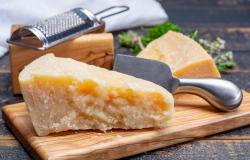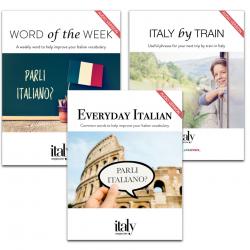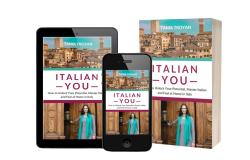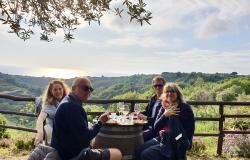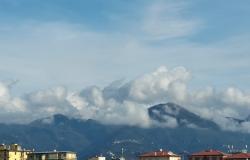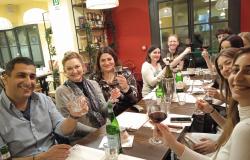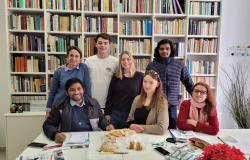Castel Roncolo in Bolzano: A Trip into the Medieval World of Knights and Dames
ITA:
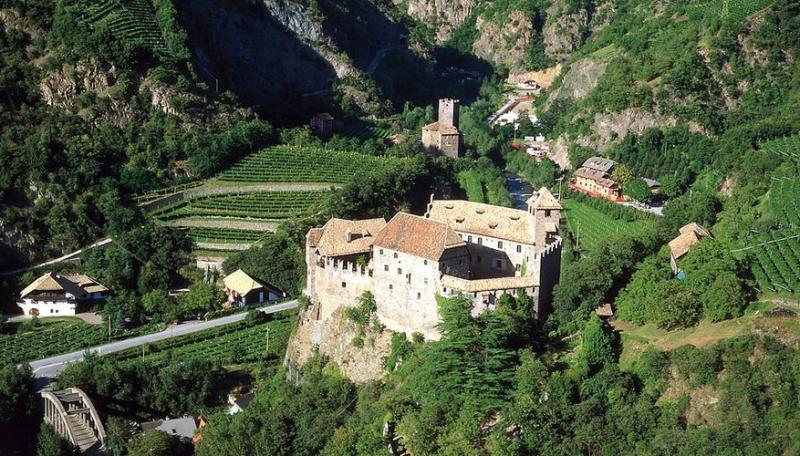
Use player to listen to Italian version
Castel Roncolo, known as the “painted manor”, is a medieval castle located on a rocky spur above the Talvera river at the entrance of the Val Sarentino in South Tyrol, just outside Bolzano: it is famous, and worth a visit, for the extensive cycle of frescoes depicting courtly life and culture, with references to literary figures such as King Arthur and his knights, Tristan and Isolde.
Unlike many other castles in South Tyrol that have been heavily restored in the modern era, Castel Roncolo has retained its medieval character, which makes a visit there a trip back to the time of knights and dames.
Built in 1237, the castle was disputed and changed owners several times through the centuries. The frescoes were commissioned in 1390 by the brothers Franz and Niklaus Vintler, wealthy merchants from Bolzano, who were the owners at the time. The artists, however, are not known.
The works of art represent the largest cycle of frescoes from the Middle Ages depicting profane topics. In the so-called ‘Casa d’Estate’ (Summer House), built in 1390 next to the main Romanesque-style building, are the frescoes depicting chivalrous-literary themes, such as scenes from the story of Tristan and Isolde, and one of the oldest fresco depictions of King Arthur’s Round Table. The frescoes in the western palace of Castel Roncolo depict scenes of court life. The ‘Tournament Room’ features a remarkable representation of a medieval tournament with spears and of the aristocracy’s fashion habits. Overall, these frescoes offer a precious glimpse into the courtly life of the Middle Ages.
Castel Roncolo can be easily reached by public transportation from the center of Bolzano, but, if you like walking, I recommend getting there via the riverside promenade ‘Lungo Talvera,”, a shaded walking path by the side of the river Talvera, which begins near the Ponte Talvera (in the city center), and offers great views over some of Bolzano’s historic buildings and the vineyards and mountains that surround the city.
Castel Roncolo, detto anche il “maniero illustrato”, è un castello medievale situato su uno sperone roccioso sopra il fiume Talvera all'ingresso della Val Sarentino in Alto Adige, appena fuori Bolzano: è famoso, e merita una visita, per l’ampio ciclo di affreschi raffiguranti scene di vita e cultura cortese, con riferimenti a figure letterarie come Re Artù e i suoi cavalieri, Tristano e Isotta.
A differenza di molti altri castelli in Alto Adige che sono stati pesantemente ristrutturati nell'era moderna, Castel Roncolo ha conservato il suo carattere medievale; visitarlo significa compiere un viaggio indietro nel tempo di cavalieri e dame.
Costruito nel 1237, il castello fu conteso e cambiò proprietà più volte nel corso dei secoli. Gli affreschi furono commissionati nel 1390 dai fratelli Franz e Niklaus Vintler, ricchi mercanti di Bolzano, che all'epoca erano i proprietari. Gli artisti, tuttavia, non sono noti.
Le opere d'arte rappresentano il più grande ciclo di affreschi del Medioevo raffiguranti temi profani. Nella cosiddetta "Casa d'Estate", costruita nel 1390 accanto al principale edificio in stile romanico, vi sono gli affreschi che ritraggono temi cavallereschi-letterari, come le scene che ritraggono Tristano e Isotta e una delle più antiche rappresentazioni su affresco della Tavola Rotonda di Re Artù. Gli affreschi del palazzo occidentale di Castel Roncolo raffigurano scene di vita di corte. Nella Sala del Torneo ad esempio c’è una notevole rappresentazione di un torneo medievale con lance, e dei vestiti tipici indossati dall'aristocrazia. Nel complesso, questi affreschi offrono uno spaccato prezioso sulla vita di corte del Medioevo.
Castel Roncolo è facilmente raggiungibile con i mezzi pubblici dal centro di Bolzano, ma, a chi ama camminare, consiglio di arrivarci con la passeggiata lungo il fiume Lungo Talvera; il sentiero ombreggiato, che inizia vicino al Ponte Talvera (nel centro della città), offre splendide viste su alcuni degli edifici storici di Bolzano e sui vigneti e le montagne che circondano la città.


